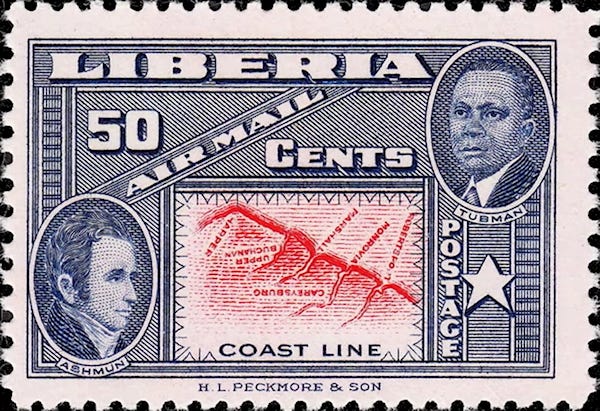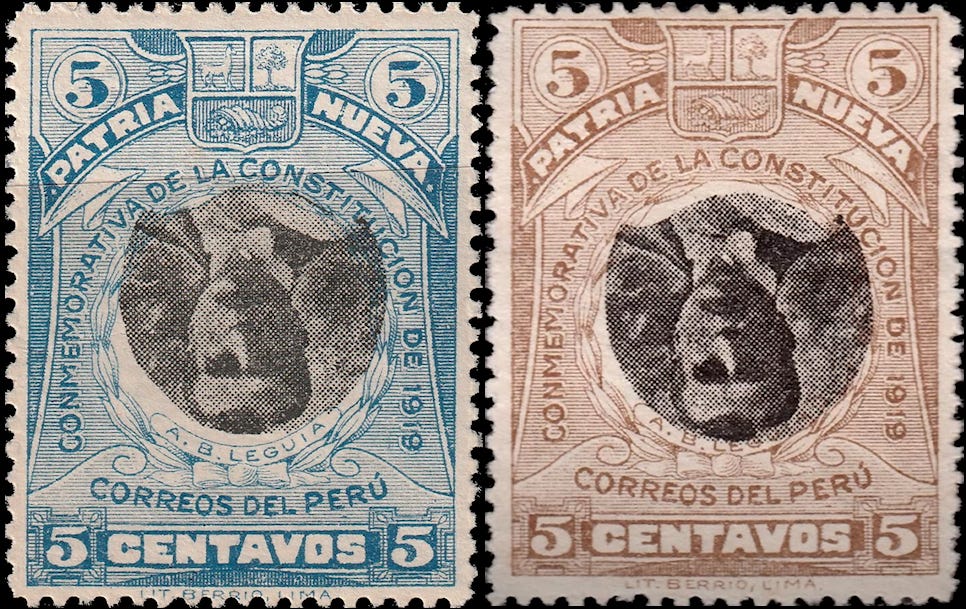Stamp collectors love error stamps. I don’t think that comes as news to anyone. Collectors like to have items that are unusual and out of the ordinary, and errors, by definition, are out of the ordinary. A whole collecting area has grown up around these so-called Errors, Freaks, and Oddities, or EFOs.
What are the distinctions between the three terms? They all refer to an anomaly in the final issued stamp that deviates from the intended design. The boundaries between the categories can sometimes be quite blurry, with disagreement arising among collectors as to a particular stamp’s label. But, generally speaking, these are the characteristics:
Error—A major, consistent, and repeatable mistake that occurs during the design or printing process. Examples of design errors are: misspelled words or incorrect dates, incorrect depictions of people or, worse, national borders, or even artistic gaffes like showing a cross-country skier with no skis on his feet. Examples of printing or production errors are: missing colors, missing overprints, and, of course, inverted centers.
Freak—A random, inconsistent anomaly that doesn’t repeat consistently throughout a printing run. Under this category you’ll find such things as paper folds—where, say, a corner of the sheet got folded over in the press, resulting in a sheet with incompletely printed stamps in that corner, with the remainders of those stamps appearing on the backside of the sheet when the corner is unfolded.
Misperforations are also lumped in as freaks when they are significantly off-center, sometimes even perfectly bisecting the stamp design.
Foreign matter—for example, a torn piece of paper or an insect—finds its way onto a printing plate and disrupts the ink transfer from the plate to the paper.
Oddity—Oddities are stamps with some kind of deviation from a normal stamp, caused usually by normal variations in printing due to mechanical alignments shifting or plate wear or damage as printing progresses. Such anomalies as color misregistration, ink smears, and broken frame lines fall under this category.
Looking at error stamps, I think it’s safe to say that those with inverted centers hold the most fascination and are the most popular among collectors. Some of the most valuable stamps in philately are invert errors.
One of the earliest invert errors is the 1854 Western Australia 4p blue Swan (Scott Nr. 3). This stamp, speaking accurately, has an inverted frame, as the center was printed first, and then those sheets would then go through another printing step with plates having only the frame design with different denominations. 14 complete copies of this stamp are known to exist, each with a 2025 Scott Catalogue value of $200,000 used, which is the only condition in which it has been found.
Jamaica produced one sheet of its 1920 1-shilling “Statue of Queen Victoria” stamp, Scott Nr 83, with, again, the frame inverted relative to the center vignette. 20 copies are known to exist—15 mint (including 2 blocks of 4) and 5 used. The 2025 Scott Catalogue values these as mint and used singles at $40,000 and $25,000, respectively.
In 1920 also came the Belgium “Dendermonde Invert” (Scott Nr 139), this one being a true inverted center, as the frame was printed first. Because of uncertainties about the status of 2 copies that were stolen in 1942, the number of known copies of this stamp is either 15 or 17, with 2 known used examples. The Scott Catalogue values only the mint stamp, at $67,500. Scott does not give a value for the stamp in used condition, but Wikipedia cites a figure of 75,000 euros.
With valuations like these tossed around, a collector might be excused for believing that owning invert errors is beyond the means of all but those with deep pockets. However, that is not the case. There are many affordable (I know, that’s a relative term) invert errors to be found. Sticking to an upper limit of $25, I will give 5 examples.
Guyana 25c Orchid, Scott Nr 141 (1972)—this stamp, from a 15-stamp set (16 counting the corrected stamp) depicting orchids, was printed with the flower stems “drooping” upwards. After the error was discovered, a corrected stamp was issued the next year. I find it interesting to note that neither the Scott Catalogue nor Colnect makes any mention of the inverted design; Scott merely notes that Nr 141, the error stamp, shows 3 blossoms on the right side of the stamp and 2 blossoms on the left, while Colnect only points out that the 25c denomination is centered on the error stamp and offset to the right on the corrected stamp. Evidently a good quantity of sheets must have been distributed before the error was corrected as Mint Never Hinged copies of the error can be readily found on Hipstamp for 3 or 4 dollars, versus a Scott Catalogue value of $5, while used examples can be had for $3 or less, against a Scott value of $9.
In 1985, Bulgaria issued a set of stamps for the European Swimming Championships, held in Sofia. One of them, depicting the synchronized swimming event, shows a swimmer who is looking decidedly blue in the face.
That’s because the center was inverted. A corrected stamp shows the swimmer in her proper orientation, with her head underwater. The Scott Catalogue lists only the corrected stamp (Scott Nr 3085, $1.50 Mint) while relegating the error stamp to a footnote saying that this value exists with an inverted center. With this issue, I believe the corrected version may be the tougher one to find, as the only listings on HipStamp, as I write this, are for sets with the inverted center, and one of them can be purchased for all of $1.50.
In 1952, Liberia issued a pair of airmail stamps with central vignettes showing maps of Monrovia and the Liberian coastline, Scott Nr C68-C69. The normal copies have a combined Scott Catalogue value of just 95¢, while the invert errors, which again do not get a separate listing, get just a note saying that inverts have a value of $50 each. Right now, I can see 2 sets listed on HipStamp for $40 for the pair.
The Dominican Republic issued a set of 7 stamps in 1902 noting the 400th anniversary of their capital city, Santo Domingo, Scott Nr 144-150. 6 of the 7 stamps were printed with inverted centers, including the one shown below. Each of the 6 inverts are valued by the 2017 Scott at $17.50. Unless Scott has raised the value in the past 8 years, I believe these are unrealistically low values, and if you (or I) can find them for anywhere near $17.50 each, it would be a bargain. There are currently none listed on HipStamp, and eBay has one lone current listing asking $799 for the set of 6 inverts.
Finally, my last example is from Peru. This is a pair of stamps issued in 1919, Scott Nr 220b and 221b, with a center vignette depicting Peru’s president from 1908 to 1912, Augusto Leguia. While the normal right-side-up variety lists in the Scott Catalogue for just 40¢ a piece, each of the inverts has a 2025 Scott Catalogue value of $15. Again, good luck finding one. There is nothing on HipStamp right now, though eBay has one current (as I write this) auction listing with an opening bid of $3.95 waiting to be made. Hurry, it closes in 5 days.
As you can see, a nice collection of invert errors can be compiled without breaking most bank accounts. And even just one page of an album devoted to some inverts adds a nice touch of spice to a collection.
If you have any affordable invert stamps of your own you would care to share, leave a comment below, or come over to the Ted Talks Stamps forum and post pictures of them.
Thanks again for your support. I wish you all…
Happy stamping.














Excellent article!
Much appreciated.... This tutorial proves that once you leave the confines of the developed world , interesting stamps can be had for a fraction